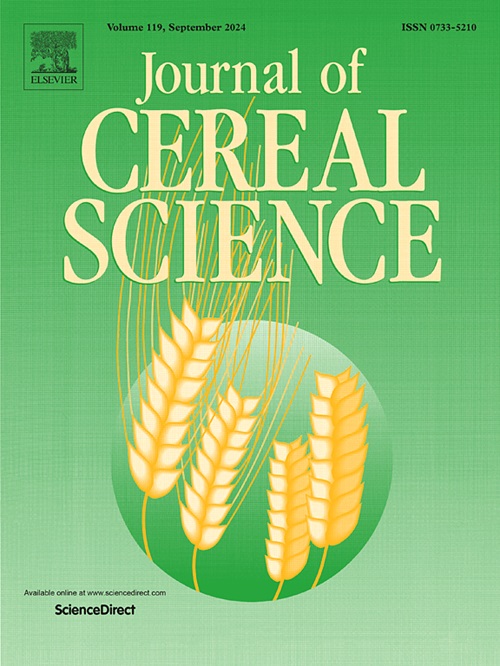Impact of wheat flour composition on dough properties: Focus on the minor components
IF 3.7
2区 农林科学
Q2 FOOD SCIENCE & TECHNOLOGY
引用次数: 0
Abstract
In bread-making, various quality criteria describe dough behaviour, but their determinants and relationship to flour composition remain unclear. This study examined 282 wheat bread flour samples representative of French wheat-growing conditions that were used to address this issue using statistical modelling. The quality criteria analysed include alveograph variables—elasticity index (Ie), baking strength (W), tenacity (P), extensibility (L), and the tenacity-to-extensibility ratio (P/L)—as well as quantitative variables from the bread-making test, such as bread volume (BV) and dough elongation at shaping (DE). An in-depth biochemical characterisation of the flour samples was performed, measuring proteins, starch, lipids and arabinoxylans. A model selection approach based on the Bayesian Information Criterion (BIC) and the Variance Inflation Factor (VIF) was applied to identify the key determinants of these quality criteria, integrating the influence of composition variables on water absorption. Results indicate that farinograph water absorption significantly influences W and P, but not Ie and DE, which are more strongly determined by gluten-related variables. Notably, arabinoxylans impact all quality criteria, while lipids significantly affect W and DE. Finally, our results revealed a strong dependency between Ie and dough elongation under French bread-making conditions.

小麦粉成分对面团性质的影响:关注次要成分
在面包制作中,各种质量标准描述面团的行为,但它们的决定因素和与面粉成分的关系尚不清楚。本研究检查了282个代表法国小麦生长条件的小麦面包粉样本,使用统计模型来解决这一问题。所分析的质量标准包括气泡测量变量——弹性指数(Ie)、烘烤强度(W)、韧性(P)、延伸性(L)和韧性-延伸性比(P/L)——以及面包制作试验中的定量变量,如面包体积(BV)和面团成型伸长率(DE)。对面粉样品进行了深入的生化表征,测量了蛋白质、淀粉、脂质和阿拉伯木聚糖。采用基于贝叶斯信息准则(BIC)和方差膨胀因子(VIF)的模型选择方法,综合成分变量对吸水率的影响,确定了这些质量标准的关键决定因素。结果表明,脂肪吸水率显著影响W和P,但不影响Ie和DE,后者受谷蛋白相关变量的影响更大。值得注意的是,阿拉伯木聚糖影响所有质量标准,而脂类显著影响W和DE。最后,我们的研究结果显示,在法国面包制作条件下,Ie和面团伸长率之间存在很强的依赖性。
本文章由计算机程序翻译,如有差异,请以英文原文为准。
求助全文
约1分钟内获得全文
求助全文
来源期刊

Journal of Cereal Science
工程技术-食品科技
CiteScore
7.80
自引率
2.60%
发文量
163
审稿时长
38 days
期刊介绍:
The Journal of Cereal Science was established in 1983 to provide an International forum for the publication of original research papers of high standing covering all aspects of cereal science related to the functional and nutritional quality of cereal grains (true cereals - members of the Poaceae family and starchy pseudocereals - members of the Amaranthaceae, Chenopodiaceae and Polygonaceae families) and their products, in relation to the cereals used. The journal also publishes concise and critical review articles appraising the status and future directions of specific areas of cereal science and short communications that present news of important advances in research. The journal aims at topicality and at providing comprehensive coverage of progress in the field.
 求助内容:
求助内容: 应助结果提醒方式:
应助结果提醒方式:


